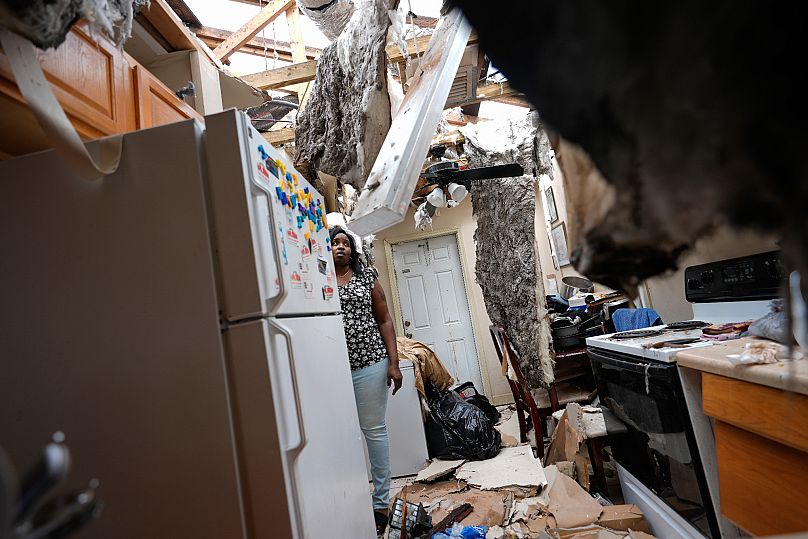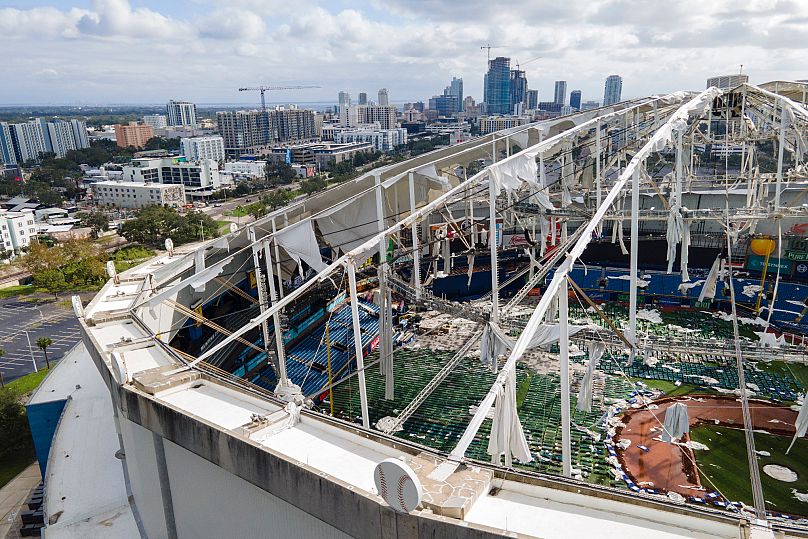
With warmer than normal ocean waters, forecasters are expecting yet another unusually busy hurricane season for the Atlantic. But they don't think it will be as chaotic as 2024, the third-costliest season on record as it spawned killer storms Beryl, Helene and Milton.
The National Oceanic and Atmospheric Administration on Thursday unveiled its outlook for the Atlantic hurricane season that begins 1 June and stretches through the end of November, with a 60 per cent chance it will above normal, 30 per cent chance near normal and just 10 per cent chance it will be quieter than average.
The forecast calls for 13 to 19 named storms with six to 10 becoming hurricanes and three to five reaching major status with winds of more than 177 kph.
A normal season has 14 named storms, seven of which strengthen to hurricanes and three power up further to major hurricanes.
Is climate change making hurricane season worse?
Ocean warmth is not quite as high as last year's off-the-charts heat. But it's sufficient to be the top reason for the busy forecast, National Weather Service Director Ken Graham said.
“Everything is in place for an above average season," he said.
“With a warming climate, forecasting above the long-term mean is always a safe bet,” said Kristen Corbosiero, a University at Albany tropical meteorology professor who was not part of the NOAA research.
Human-caused climate change has generally made storms more intense, wetter and slower-moving so they drop more rain, Corbosiero and other experts said.
“The main fuel source for hurricanes is warm ocean waters," Corbosiero said. “Warmer ocean water, warmer atmosphere above it can hold more moisture, more fuel for storms.”

Corbosiero said there are three main factors: Water temperature, the El Nino/La Nina cycle of natural ocean warming and cooling, and “seeds” of storms coming off Africa as thunderstorms. The warmer-than-normal water pushes toward a busy season, the El Nino cycle is neutral and it's too early to know what's coming off Africa, she and other hurricane experts said.
With climate change, hurricanes are powering up from almost nothing to intense storms more quickly, giving people less notice for whopper storms, meteorologists said.
Every Category 5 hurricane that hit the United States was a tropical storm or weaker just three days earlier, Graham said.
Are weather forecasters in the US ready for a busy hurricane season?
Despite massive job cuts at NOAA from the Department of Government Efficiency, “our ability to serve this country has never been better and it will be this year as well,” Graham said at a news conference Thursday in Gretna, Louisiana, to commemorate the 20th anniversary of Hurricane Katrina.
“The hurricane centre is fully staffed up and we’re ready to go,” acting NOAA administrator Laura Grimm said. “We are making this a top priority for this administration.”
Since 1995, 21 of the 30 Atlantic hurricane seasons have been officially classified as above normal, with nearly half of those considered “hyperactive,” according to NOAA.

It classifies seasons based on their Accumulated Cyclone Energy (ACE) index, which takes into account the number and strength of storms and how long they last. In the last 10 years, only 2015 was below normal and 2022 was near normal.
Last year started with a record early Category 5 hurricane in Beryl but then had a lull during the early part of peak storm season from mid-August to mid-October. But then six storms, including Helene and Milton, formed in just two weeks.
With 18 named storms, 11 of those becoming hurricanes and five major hurricanes, 2024 was considered a hyperactive season in the Atlantic. And it was the third such in the last 10 years.
What do other forecaster predict will happen in 2025?
Several other groups besides NOAA - private, public and academic - have already made forecasts for the upcoming season and they average out to a busy, but not hyperactive year with 16 named storms, eight of which become hurricanes and four major hurricanes.
Phil Klotzbach, who coordinates Colorado State's pioneering forecast program, is calling for a bit more than other forecasters - 17 named storms, nine hurricanes and four majors - heavily based on the warm waters and past trends. Still, it should not quite be like last year, he said.
“At least we're not looking at a crazy hot Atlantic like we did last year at this time,” Klotzbach said. “We're still pretty toasty out there. So I don't have the warm fuzzies about 2025.”
Even if it's a quiet year, Corbosiero said just one storm can change everything, recalling an ultra quiet 1992, when that one storm was the devastating Hurricane Andrew.
“We don’t need a hyperactive season to have devastation in the US or the Caribbean or anywhere,” Corbosiero said.







